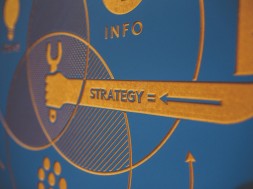
What can a pizza, a dog’s prosthetic leg, and wedge-heeled ankle boots possibly have in common? These three starkly unrelated three-dimensional objects have all been ‘printed’ into reality through the magic of 3D printing. Also known as additive manufacturing, 3-dimensional printing is a hot new technology which can make the printing of everyday objects possible. With this new printing technology, an “object is created by laying down successive layers of material until the entire object is created.” Using a 3D model or a 3D scanner, the digital files are prepared to show hundreds or thousands of layers which 3D printers can then read and create layer upon layer of material, resulting in a three-dimensional piece.
Past
Invented in 1981 by Dr. Hideo Kodama, this type of printing was first called Rapid Prototyping (RP) Technology because it was first used in creating prototypes and models using CAD data; [MS2] however, the man responsible for the precursor of 3-D printing is Charles Hull, who first patented the stereolithography apparatus (SLA) in 1983. He then went on to co-found 3D Systems Corporation which sold its first printer, the SLA-1, in 1988.
Since Hull’s invention of the stereolithography apparatus, other types of printing technologies have been developed with the same principle of fabricating layers to assemble a three-dimensional object:
- Fused Deposition Modeling (FDM)/Fused Filament Fabrication (FFF)
- Selective Laser Sintering (SLS)
- PolyJetting
Present
In 2015, 3-D printing technology has become more sophisticated, cheaper, and accessible. It has diverse uses in a variety of industries:
- Medicine – Six surgeries using customized replacements for body parts made by these printers have been successful, with other types of medical applications to come. Often cited as one of the many revolutionary technologies in healthcare, the equipment has been known to print blood vessels, skin, bone, and prosthetic parts.
- Food – Natural Machines has developed Foodini, a 3D food printer which aims to reduce the stress of cooking at home. Funded by NASA, the oven-looking machine works by loading up the ingredients into the device, choosing a recipe with its touch screen interface, after which it will ‘print’ the dish. Another food printer called Boscuni is bringing sweets to the next level by printing marzipan into any shape, like this boat.
- Homes – A Chinese company recently made headlines by printing houses which can withstand 9.0 magnitude earthquakes. In its demonstration, a full-scale living room, bathroom, kitchen and bedroom only took 3 hours to complete. The company says that a whole villa may only take 15 days to construct with this technology.
- Toys and Accessories – Children’s drawings come to life with Crayon Creatures, a company that creates figurines with 3D production technology. Designer Pauline Van Dongen has created 3D printed high-heeled women’s’ shoes. Other uses of 3D making for fashion include bag-making, textiles and jewellery.
Future
So, what lies ahead for 3D printing technology? Rick Smith in his Forbes Magazine article, ‘3D Printing Is About To Change The World Forever’, says that it will change every industry. With larger and bolder innovations, the technology may localize manufacturing and production of consumer goods. For example, a car part which needs to be sourced from far away may one day be printed locally in one’s community. Need a dress that will fit like a glove? You may be able to just print it. Even Airbus has announced that in 2050, they may be able to produce a complete plane from 3D printing. There will also be an increase in customization since printing in 3D can be very precise to one’s needs. Businesses that apply this technology all throughout their supply chains will radically change their manufacturing and delivery turnarounds, resulting in improved bottomlines.
Today’s new printing technology may be on a whole new level in ten or twenty years. There’s even a talk of 4D technology already at MIT. What is definite, however, is that whether in its past, present or future, three-dimensional printing has and will continue to make an impact on our daily lives.






